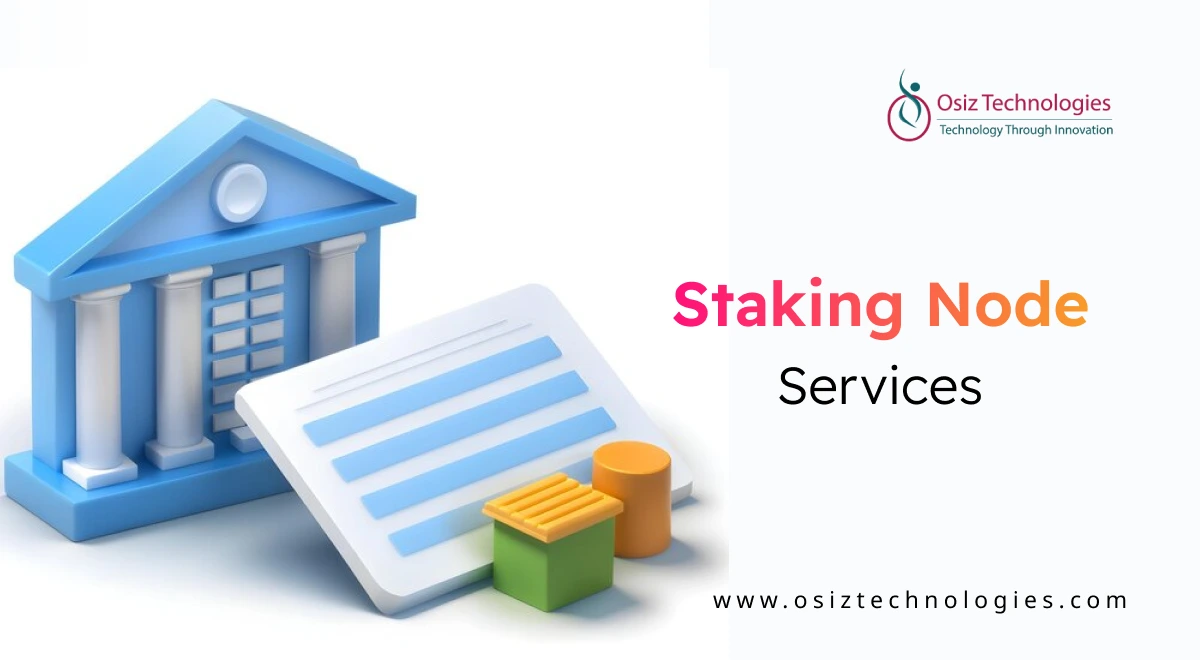The Backbone of Proof-of-Stake Networks
Together with advancements in blockchain technology come advancements in network securing and rewards earnings. As a developer, an investor, or simply a fan of blockchain, knowing about staking nodes is essential to your successful exploration of the crypto future.
What Is a Staking Node?
A staking node is a computer (or server) which takes part in a Proof-of-Stake (PoS) or another consensus mechanism by securing transactions and generating new blocks. PoS is less energy-intensive and more accessible than energy-hungry Proof-of-Work (PoW), which is based on mining.
How Do Staking Nodes Work?
In order to run a staking node, someone or some group of people has to lock up some value of the network's native coin — let's say a stake. The more you stake, the greater the chance the node will be selected to validate the next block.
Here is a rough sketch of the process:
Stake Tokens
You put your tokens into a wallet or smart contract as collateral.
Run a Node
You run and host a full node on the network that is up always to achieve consensus.
Validate Transactions
Your node assists in validating new transactions and adding them to the block chain.
Earn Rewards
As compensation for that work, you receive staking rewards — usually a percentage of transaction fees or new tokens.
Types of Staking Nodes
Validator Nodes
They are actually involved in block building and transaction verification. Operating a validator node at times involves technical savvy and high availability.
Delegator Nodes
Certain PoS networks permit individuals to delegate their stake to a validator, splitting the rewards but not operating a node themselves.
Masternodes
Specialized nodes on certain blockchain networks that demand a greater stake and offer extra services, like governance voting or instant transactions.
Advantages of Running a Staking Node
Earn Passive Income
Staking rewards provide an opportunity to earn money on your cryptocurrency holdings.
Contribute to the Network
Your node helps secure the network, decentralizes it, and makes it more efficient.
Governance Participation
In certain protocols, node operators get a vote on proposals that determine the direction of the network in the future.
Things to Consider Before Running a Staking Node
Technical Skills
Running a node often involves server installation, security hardening, and maintenance.
Minimum Stake Requirements
Networks such as Ethereum have minimum stake (for instance, 32 ETH for Ethereum 2.0).
Slashing Risks
Misbehaving or becoming offline can cost penalty or loss of part of your stake.
The Future of Staking Nodes
With the crypto ecosystem advancing further, staking is increasingly becoming the foundation of several future-generation blockchains arising such as Ethereum 2.0, Cardano, Polkadot, and Solana. staking nodes will increasingly find themselves at the forefront of scaling, securing, and governing decentralized networks, With continued growth in adoption, as well as innovation,
Build Secure, Scalable Staking Nodes — the Osiz Advantage
Osiz Technologies, a seasoned top-tier blockchain development company, specializes in the development of staking nodes with end-to-end solutions specifically designed for Proof-of-Stake (PoS) networks such as Ethereum, Cardano, and Polkadot. Equipped with profound blockchain knowledge, hardened security, 99.9% uptime, and intuitive interfaces, Osiz provides a scalable, secure, and reliable staking infrastructure. Their solutions consist of customized node installation, smart contract integration, and one-on-one support — a perfect fit for businesses and blockchain initiatives that need to deploy or automate staking operations.
Staking nodes are the foundation of the Proof-of-Stake phenomenon, a cleaner, more welcoming iteration of the old-fashioned technology of mining. If you want to get in on contributing to blockchain infrastructure or simply want to earn rewards on your crypto holdings, learning about staking nodes is your doorway to an ever-expanding horizon.
Listen To The Article
Recent Blogs

X-Mas 30%
Offer











